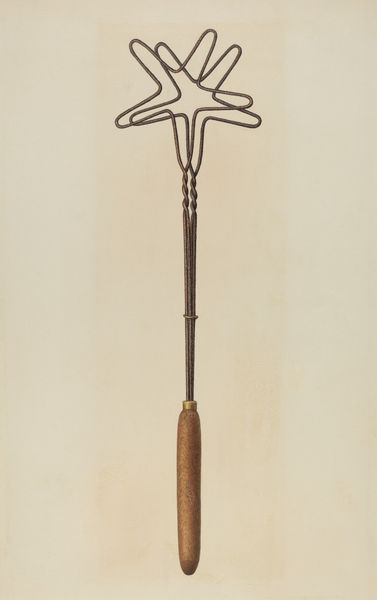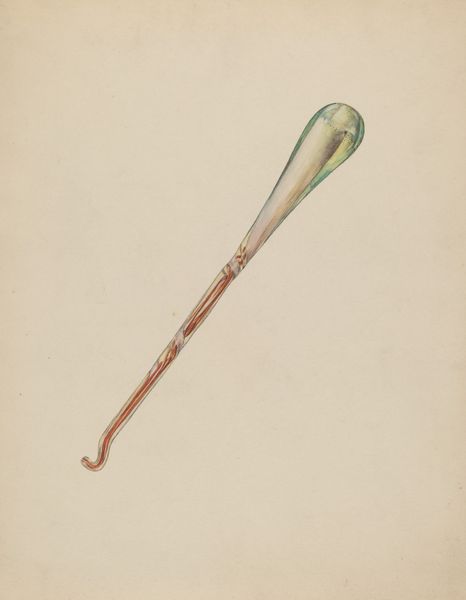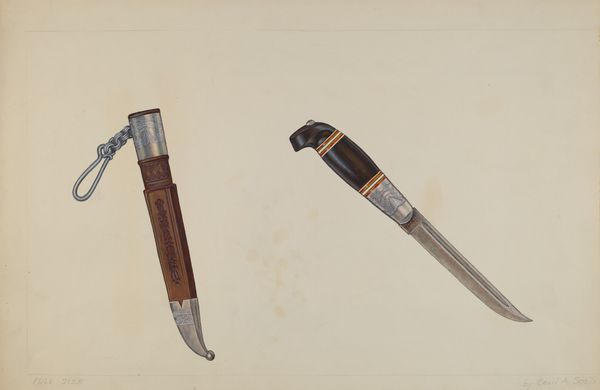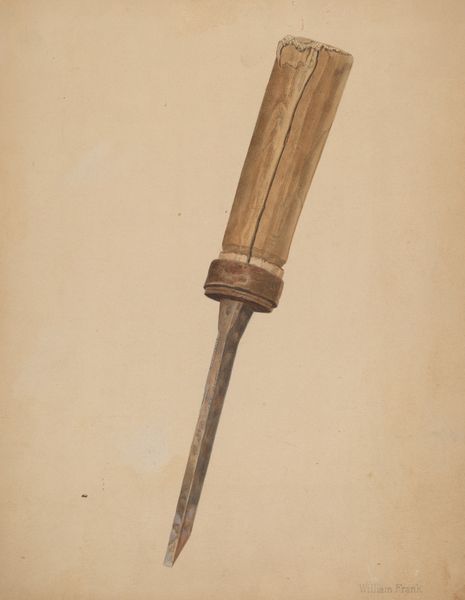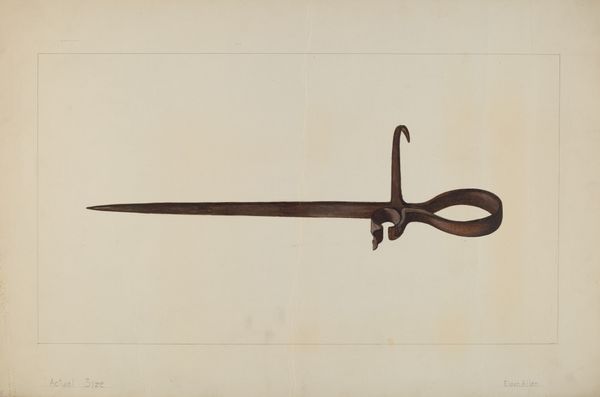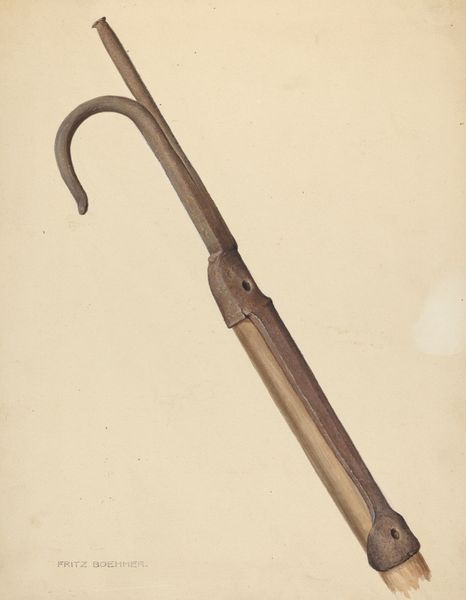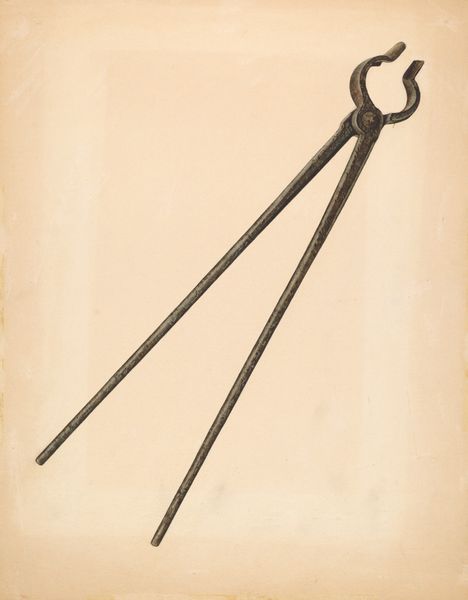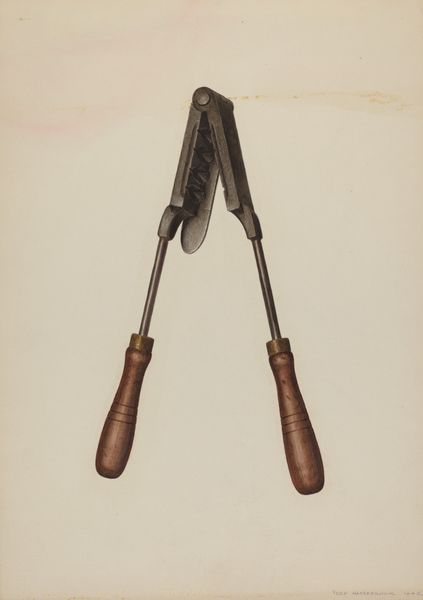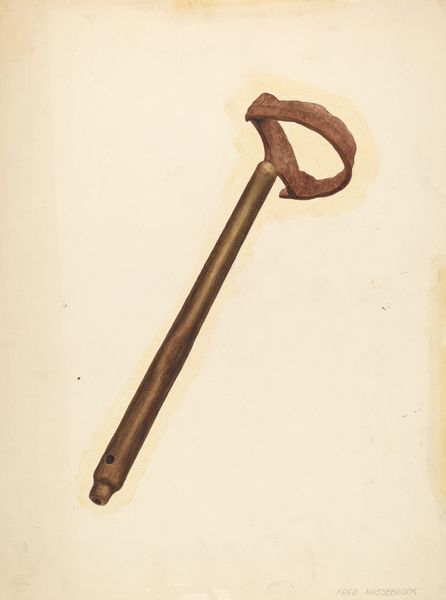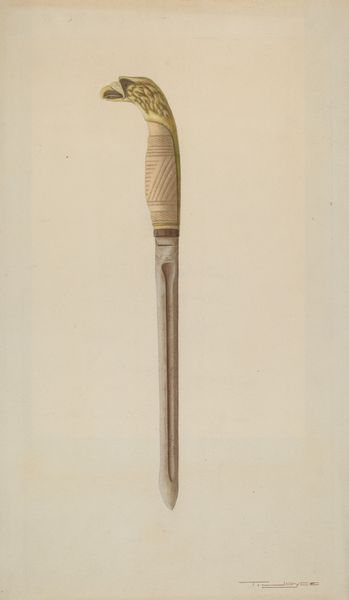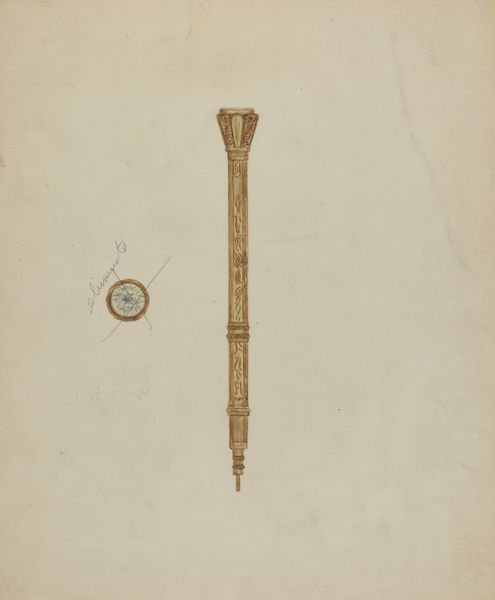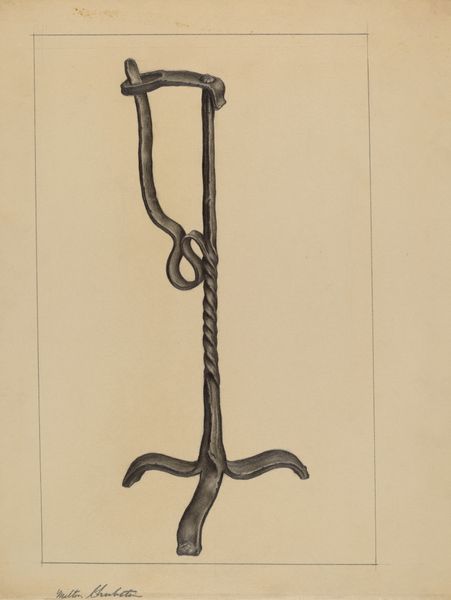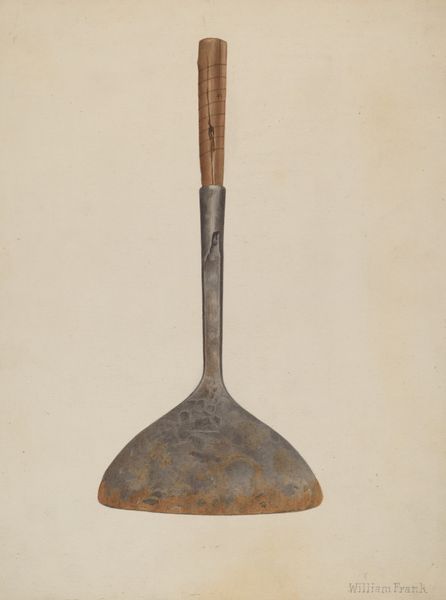
drawing, paper, ink
#
drawing
#
paper
#
ink
#
watercolor
#
realism
Dimensions: overall: 39.5 x 30.7 cm (15 9/16 x 12 1/16 in.) Original IAD Object: 10 7/8" long1 3/4" in diameter
Copyright: National Gallery of Art: CC0 1.0
Curator: We’re looking at Edward Bashaw's "Ink Marking Pen," likely from around 1940. It's rendered in ink on paper. Editor: My first thought is that it appears surprisingly elegant for what seems to be a purely functional tool. The composition is minimal, yet the execution is detailed, which yields a very appealing object to observe. Curator: Absolutely, the formal qualities here are captivating. Consider the precision of line and form. The object’s linear emphasis leads the eye, but it's interrupted by tonal shifts within each band—those varying degrees of ink washes provide dimension. The small chain provides some structural complexity. Editor: But what about the tool itself? It’s an "Ink Marking Pen", suggesting a workaday object. Who used it? What purpose did the inscription on the shaft serve? Was Bashaw himself engaged in labor where such an object was commonplace? We’re seeing a depiction, but not truly understanding its functionality. The material’s historical origins are important in understanding what it depicts. Curator: Indeed. However, the reduction to essential form encourages us to consider the fundamental characteristics: line, plane, and volume. Note that Bashaw isolates and presents this "everyday" item as an aesthetic experience through his technical expertise. The layering here is not simply a documentary technique, but instead it’s a strategy to highlight shape and its interplay with light. Editor: I'd argue that the choice of medium, ink on paper, elevates the tool while simultaneously suggesting the accessibility of its creation. The skill involved in replicating it with precision also demonstrates that art doesn't have to be elite and precious. The choice of tools implies that art and craft can come together. Curator: An insightful assessment, recognizing the tension between function and representation is key here. It prompts consideration about how things become 'art' in the first place. Editor: Precisely! So while a pure formal analysis gives us shapes and lines to contemplate, examining the origins of both medium and subject lets us ponder broader meanings around creativity, labor, and the inherent artfulness we often overlook. Curator: Perhaps the convergence between artistic practice and functional production can become another way of reading this piece. Editor: Yes, and acknowledging the craftsmanship of both making the original marking pen and drawing it provides rich texture to our experience.
Comments
No comments
Be the first to comment and join the conversation on the ultimate creative platform.

